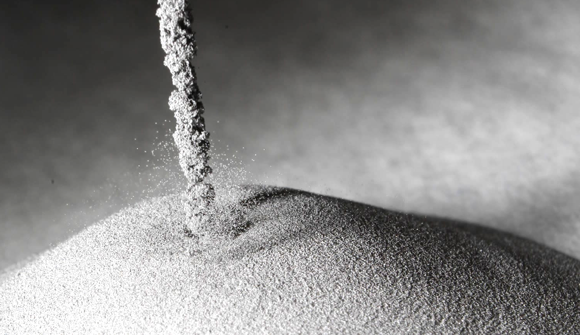In the early-to-mid twentieth century, modern plastics became a famous material for making a wide range of items. People may now utilize plastic compounds to create an almost limitless number of polymers that manufacturers employ in everything from consumer products to medical equipment and aviation components.
However, in their original compositions, plastics may have restrictions that make them inappropriate for some uses. Some of the properties that might limit the usage of certain plastics in specific sectors include poor energy absorption, colorability, strength, chemical and water resistance.
Fortunately, advancements in plasma technology have altered everything. Plasma treatment can now cause particular polymers to acquire new properties, potentially opening up new applications for previously inappropriate materials.
The application of plasma powder activation has substantially enhanced filtration technology. You may now utilize it to make a specific plastic constituent chemically active to a previously unaffected material.
This advancement allows filter makers to use new plastic materials to build more effective, smaller, and less expensive products – plasma treatments covalently link the filter chemistry to increase filter performance significantly.
Plasma powder activation provides new potential for organizations interested in improving the integration of a specified powder into a compound that was previously hard to distribute evenly. The powder may be uniformly spread inside a polymer or fluid, such as rubber, by activating it with plasma.
Adding powder to a liquid or polymer can cause or increase desirable attributes such as wear, thermal stability, friction, chemical resistance, scratch resistance, UV resistance, hardness, and others.
Plasma Powder Activation Applications
There are several uses for plasma-activated powders. A recent article, for example, found that oxygen plasma activation of PE powder increased wettability by around 220%. Another group discovered that processing PE with plasma reduces molecular weight without affecting the powder’s other qualities.
Plasma treatment might increase the adhesion of PE powder to metal and glass surfaces fivefold. It has the potential to generate intriguing new approaches for making composite materials. Other polymers, such as polystyrene, benefit from CF4 plasma treatment in terms of hydrophobicity.
However, powders of other substances can also be plasma treated to achieve different results. Researchers demonstrate that plasma treatment may densify metallic or ceramic grains. Finally, even uncommon powders such as milk powder or onion have been plasma processed to improve microbiological safety.
Here is a list of other applications of Plasma Powder Activation.
1. Disinfection And Germ Reduction Of Seeds And Spices
Plasma has a higher capacity to disinfect powder surfaces. As a result, you may use it to improve food safety and cleanliness in edible powders. Spices, milk powder, seeds, and other powders are examples. Typically, manufacturers perform plasma therapy at atmospheric pressure.
This is especially crucial when treating spices since it retains the volatile fragrant molecules of the spices. Engineers may produce plasma in various gases, including carbon dioxide, nitrogen, argon, air, and gas combinations.
2. Paint Additive (Lubricant Varnishes)
If ultra-high molecular weight (UHMW) polyethylene (PE) electricity is used in paint, the grain size must be between 30 and 60 m. Paint containing these granules has several fascinating properties. It will have a pleasant surface texture, little gloss, and excellent wear resistance.
It will also have a lower coefficient of friction, allowing items to slide across the surface quickly. Thus, paints with UHMW PE ingredients function as lubricating varnishes over a wide range of surfaces.
3. UHMW Plastic Polymers Have High Wear Resistance.
There is a great deal of active study on using UHMW polymers to increase wear resistance. A recent paper examined the abrasion and wear of several polymers. The authors demonstrated that UHMW-PE outperformed polyamide in terms of wear resistance. Furthermore, it has the lowest friction force of any materials studied in the said research. This implies it has better tribological qualities than other polymers.
4. The Inclusion Of Treated PTFE Powder Reduced Sliding Friction
Employing plasma-treated PTFE powder as a lubricant additive can dramatically improve wear and friction qualities and the sliding action between two surfaces. This was proved, for example, for air plasma-handled PTFE/Nomex composite materials. Another use of argon plasma on PTFE fibers had positive friction reduction and wear resistance results.
Click here to learn more about Plasma Power Activation.
Here are a few examples of how plasma powder activation affects material properties and performance:
1. Diamond Powder Plasma Cleansing and Activation
Diamond powder is mixed with resin or ceramic binders to make abrasive pastes, polishing abrasives, abrasives, or loose abrasives. However, attaching to some surfaces is frequently tricky – the substance would disappear without activation or washing.
Moreover, plasma powder activation alters the molecular properties of diamond powder, resulting in much-enhanced contact and increased life and performance of devices that use the versatile material.
2. Carbon Powder Plasma Activation
Pure carbon powder increases conductivity in batteries and other mechanical wirings. It can also be difficult to distribute a solution without help. Plasma activation allows carbon powder to spread in a solution devoid of additives, enhancing conductivity and heat resistance in the final product.
3. PTFE Powder Plasma Activation
Polytetrafluoroethylene (PTFE), popularly known as TeflonTM, is extensively employed by producers seeking to create a nonstick surface for commercial, consumer, and industrial items; nevertheless, its desired qualities make it challenging to include consistently in a solution. Activating plasma powder increases its ability to accomplish more thorough dissemination and generate a more consistent and dependable nonstick surface.
4. Polyethylene Powder Plasma Activation
Plasma powder activation converts previously repellent polyethylene powder to hydrophilic polyethylene powder, which is appropriate for applications where moisture absorption is desired. The inherent surface energy of polyethylene powder has little affinity for mixing with water, yet, after plasma activation, the powder quickly combines with water with little to no power or effort.
Plasma treatments can also significantly enhance the surface energy of PE powder, resulting in significantly increased tear propagation capability in some rubbers. In addition, including polyethylene powder in an industrial coating improves scratch resistance in the cured film.
Plasma Activation Facilitates The Development Of New And Improved Materials
The ability of plasma to activate and clean powder allows producers to generate novel materials with unique qualities for specific applications. The plasma activation and cleaning equipment are very effective. It may be processed in vacuum chambers with volumes ranging from 2 liters to 3600 liters, allowing manufacturers to generate modified powders on any industrial scale they desire.

